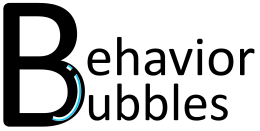Stimulus equivalence refers to a learner picking up additional relations between stimuli not explicitly taught to them after they are taught simple relations between stimuli (Arntzen & Vaidya, 2008).
This concept allows the learner to learn more in a shorter amount of time by allowing the client to derive/ “self-learn” different concepts independently without teaching all relations (Critchfield, 2018; Eikeseth & Smith, 1992).
Stimulus equivalence is demonstrated when reflexivity, symmetry, and transitivity are demonstrated (i.e. if A=B and B=C, the learner derives the relation that A=C). These concepts can be seen in Figure 1. below.
Reflexivity
This concept looks at a learner being able to select a stimulus matched to itself. For example, knowing that A=A.
Symmetry
This concept looks at the reversibility of the relation being taught. For example, when a learner is that taught that A=B, the learner derives the untrained relation that B=A independently.
Transitivity
This concept refers to a learner independently deriving an untrained relation that A=C and C=A after being taught that A=B and B=C.

Learning more about how stimulus equivalence works helps to improve the efficiency of both teaching and learning as learners will be able to derive more relations independently when taught well.
What are some ways you think stimulus equivalence can be utilised when teaching? Feel free to let me know in the comments below!
Happy teaching! :)
References
Arntzen, E., & Vaidya, M. (2008). The Effect of Baseline Training Structure on Equivalence Class Formation in Children. Experimental Analysis of Human Behavior Bulletin, 26, 1-8.
Critchfield, T. S. (2018). Efficiency Is Everything: Promoting Efficient Practice by Harnessing Derived Stimulus Relations. Behav Anal Pract, 11(3), 206-210. Doi:10.1007/s40617-018-0262-8.
Eikeseth, S., & Smith, T. (1992). The Development of Function and Equivalence Classes in High-Functioning Autistic Children: The Role of Naming. The Journal of the Experimental Analysis of Behavior, 58(1), 123-133


